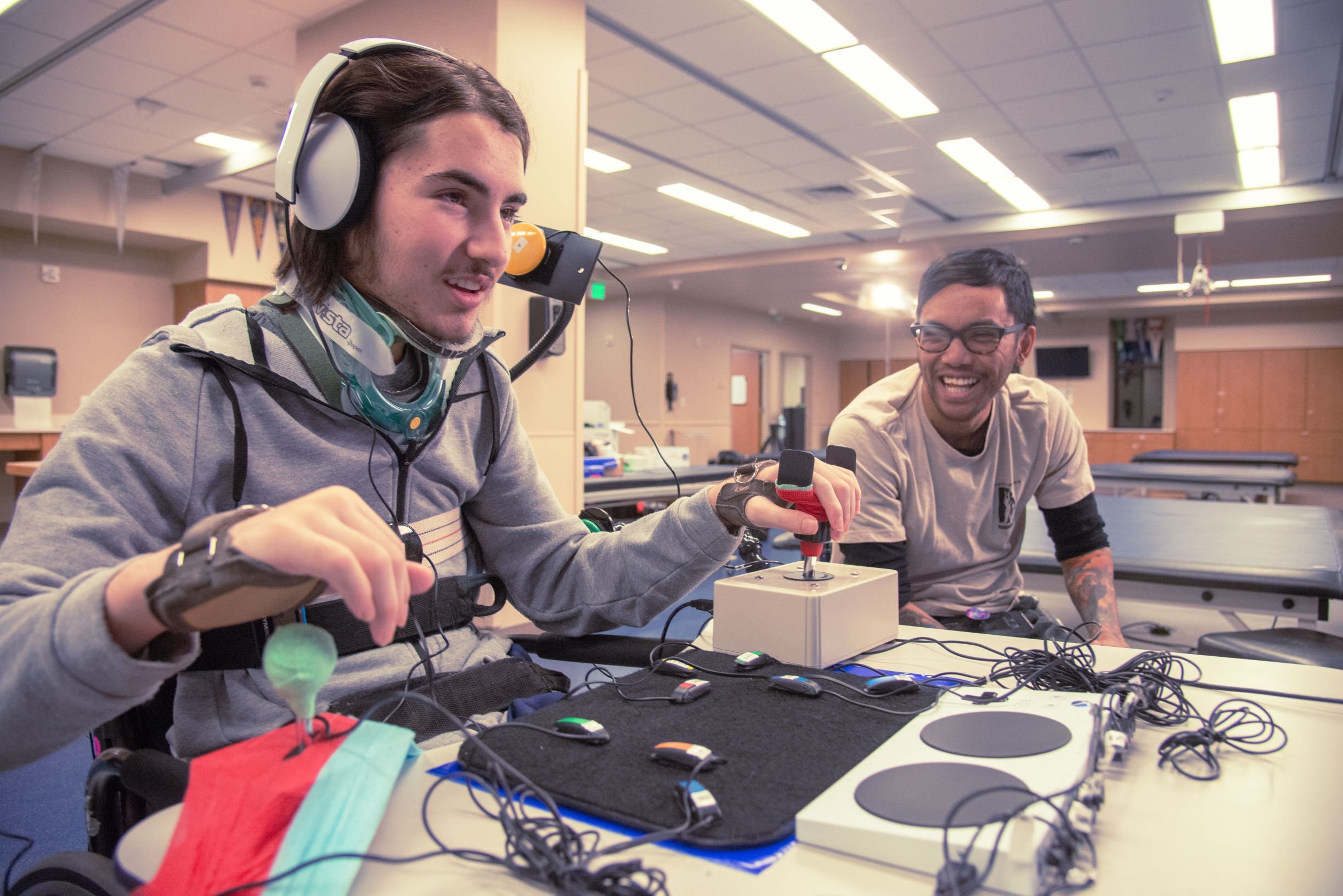Economic Empowerment for People with Disabilities
EDUCATION | June 1, 2020
Read time: < 1 Minute
Summary:
At Divine Mercy Academy, most of our focus is to create a better life for children with learning differences (disabilities) through an education. Our goal is to develop the best version and maximum potential of the students entrusted to us. This is our primary mission and we are seeing great success in developing Catholic children with learning differences to be their best self. Our initial focus is on developing the foundational skills for elementary school children.
Many parents of children with disabilities are unaware of the lurking future challenge for their children. It involves their economic empowerment and the opportunity to be financially secure as adults. Many young adults with disabilities want the same as typically abled students – they want to have a place of their own, a job and the better things in life. Their parents want this for them too.
After secondary / high school, most typically abled students go to college and secure meaningful employment. Prior to the recent pandemic, employment of typically abled young adults was at an historic high level. Unfortunately, many young adults with disabilities are left behind, unable to secure meaningful employment and achieve the economic empowerment they seek, are capable of, and deserve. While employers seek exceptional talent, millions of young adults with disabilities are chronically unemployed. This sad truth has been that this employment gap has been relatively unchanged year over year (see figure 1 below).
The labor participation rate for adults with disabilities is less than one in five, meaning four of five working age adults with disabilities lack meaningful employment (red line in figure 1). At the same time, labor participation for typically abled working age adults (blue line in figure 1) adults continues to rise and nearly four of five are employed.
 This employment gap has been prevalent for 30 years and has been largely unaffected by increased focus and funding. This problem will be exacerbated by the coronavirus pandemic, where employees with disabilities are too often the first to be laid off and the last to be rehired.
This employment gap has been prevalent for 30 years and has been largely unaffected by increased focus and funding. This problem will be exacerbated by the coronavirus pandemic, where employees with disabilities are too often the first to be laid off and the last to be rehired.
Our Opportunity:
While fewer than one in five people with disabilities are employed in most every country of the world, most are highly capable of many knowledge-worker jobs. There has been significant demand for skilled workers in the IT industry and we expect the Covid-19 pandemic to accelerate this employment demand. Businesses that digitized before the pandemic are surviving it better and with less disruption due to their digital presence. After the pandemic, we expect more businesses to increase hiring of people in IT and Cybersecurity.
Prior to COVID-19 many believe “the digital skills gap is widening” (World Economic Forum). There were almost 6 million unfilled jobs in the US and many of them in IT roles. “More than half (of ICT jobs) could go unfilled because candidates will not possess the sufficient education and qualifications” (2018 Macleod consulting study).
 People with disabilities are fully capable of filling many of these jobs but often lack the education and work experience to be considered for these in-demand roles. Only 3 in 5 people with disabilities graduate high school. Only 2 in 5 go to college and 1 in 5 graduate college with a 4-year degree. Only half of college educated people with disabilities are employed and only 1 in 4 are hired full-time. The combination of this education “winnowing” is that only about 1 in 50 people with disabilities will complete a four-year college program and have a full-time job. Figure 2 illustrates this employment challenge.
People with disabilities are fully capable of filling many of these jobs but often lack the education and work experience to be considered for these in-demand roles. Only 3 in 5 people with disabilities graduate high school. Only 2 in 5 go to college and 1 in 5 graduate college with a 4-year degree. Only half of college educated people with disabilities are employed and only 1 in 4 are hired full-time. The combination of this education “winnowing” is that only about 1 in 50 people with disabilities will complete a four-year college program and have a full-time job. Figure 2 illustrates this employment challenge.
New thinking, new ideas, and new programs are needed to bridge the huge potential people with disabilities represent to the labor pool, the company’s workforce, and to society.
One Potential Solution:
People with disabilities are capable of much more than the opportunities they are typically afforded. They accel when given the opportunity to prove themselves in the workplace. And the key to employment may lie in overcoming the education / work experience barrier. A model that is gaining success is to develop capabilities, work experience and certified skills for a particular job. There have been early successes with train-to-hire programs that develops certified skills for specific in-demand IT jobs. This approach overcomes employment barriers and provides students with disabilities with the training, experience and confidence to achieve meaningful employment and careers.
Once people with disabilities secure a job, their work effort, determination and tenacity enable them to over-achieve. People with disabilities often accel in character traits that lead to long term career success. They are unconcerned with challenges that derail typical employees, because people with disabilities have been overcoming significant barriers throughout their lives. Certified skills help overcome the initial barriers to employment which allows these character traits to shine. Successful training and employment programs have shown people with disabilities have lower error rates, higher productivity, lower absenteeism and lower turnover than typically-abled employees.
This model has been successful developing people with disabilities who are unemployed and unemployable to successful entry level ICT roles in less than a year. Successful programs have been launched in Europe and the US with employment rates over 90%.
We believe there is significant opportunity to develop the “best self” of people with disabilities. By achieving meaningful employment opportunities, people with disabilities can achieve economic empowerment, financial self-sufficiency, esteem and self confidence that can transform their lives.
Our Call to Live our Faith:
We believe the Catholic Church and Catholic Education can take a leading role in this endeavor to transform and elevate the lives of people with disabilities through employment. Jesus was clear that whatever we do for the least among us, the least of our brothers, we do for him (Mathew 25:40).
The US healthcare system has its roots in work of the Catholic Church led by the ministry of Catholic Sisters. This was a mission of mercy that started before the revolutionary war and has grown to become the healthcare delivery system as we know it today. Today, the Catholic Church is the largest non-governmental provider of healthcare services in the world.
Could the Catholic Church embrace a similar opportunity to transform the lives of people with disabilities through economic empowerment and employment? This is a question we are actively considering at Divine Mercy Academy.
- Liquid Software
- 555-555-5555
- liquidsoftwarellc.com
© Copyright 2026 Liquid Software L.L.C. Web Design by Top Shelf Creative Studios.



